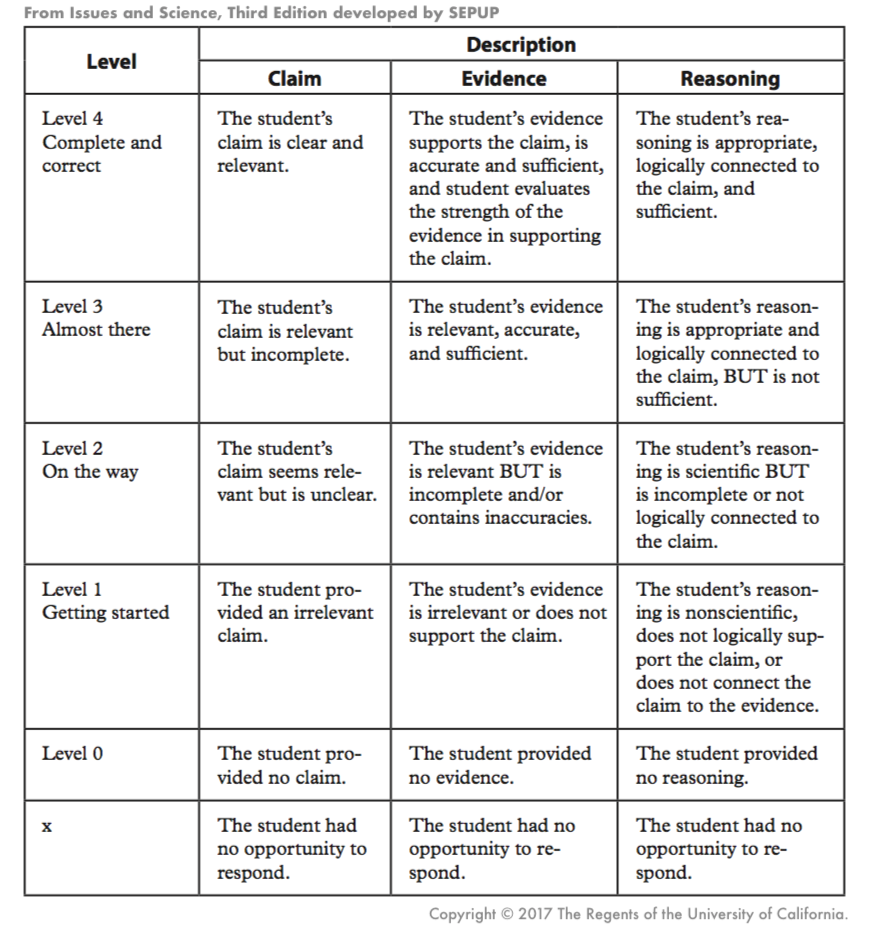
One of the Science and Engineering Practices (SEPs) in the NGSS is Engaging in Argument from Evidence: Construct an oral and written argument supported by empirical evidence and scientific reasoning to support or refute an explanation or a model for a phenomenon or a solution to a problem. The study of science and engineering should produce a sense of the process of argument necessary for advancing and defending a new idea or an explanation of a phenomenon and the norms for conducting such arguments. In that spirit, students should argue for the explanations they construct, defend their interpretations of the associated data, and advocate for the designs they propose. (NRC Framework, 2012, p. 73)
Not only is this SEP built into SEPUP's new Issues and Science, Third Edition for middle school (to see an example of how, check out SEPUP's three dimensional learning pathway towards MS-LS2-4) the practice is also supported with SEPUP's integrated assessment system - specifically with the scoring guide Engaging in an Argument from Evidence (ARG).
SEPUP materials include a research-based assessment system based on a system first developed by SEPUP and the Berkeley Evaluation and Assessment Research Group (BEAR) in the University of California Graduate School of Education. Studies show that students in classrooms where the SEPUP Assessment System was used as part of a yearlong SEPUP middle school course scored better on post-assessments than did students in classrooms where this assessment system was not used (Wilson & Sloane, 2000). The assessment system used in the Third Edition includes assessments that are designed to support classroom instruction and a series of indicators to monitor that the students are provided with adequate opportunity to learn science in the ways laid out in the Framework and the NGSS. As part of the redesign process to develop this third edition, additional assessment variables were created to capture many of the NGSS practices. SEPUP is in the process of collecting evidence about the use of these variables and their associated Scoring Guides.
- Download select Teacher Resource pages and the ARG scoring guide
- Download the Argument Tool for students (developed in partnership with AMNH and University of Connecticut for Disruptions in Ecosystems)
- Watch a video from the Teaching Channel using the Argument Tool and the Disruptions in Ecosystems unit from the bullet above
All of the above resources are from SEPUP and are copyright protected by The Regents of the University of California. 2017. Permission to re-use for classroom and professional development only.